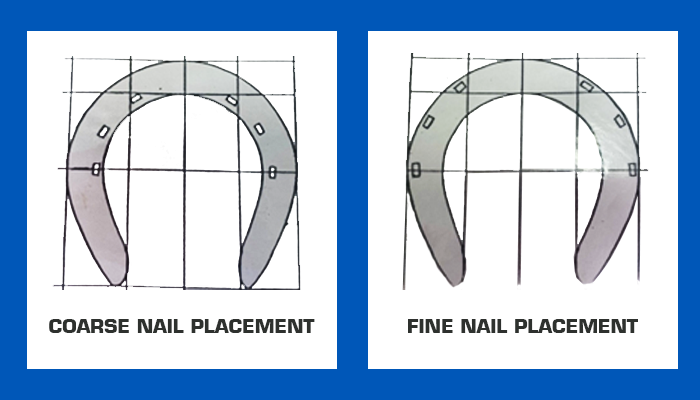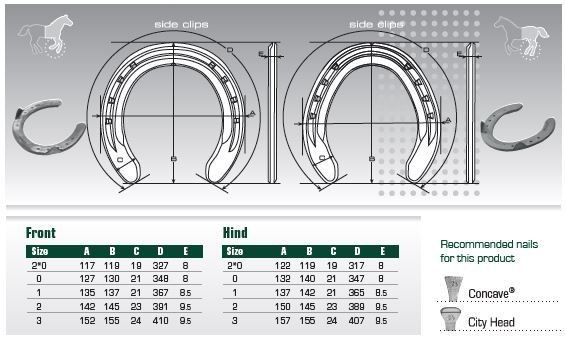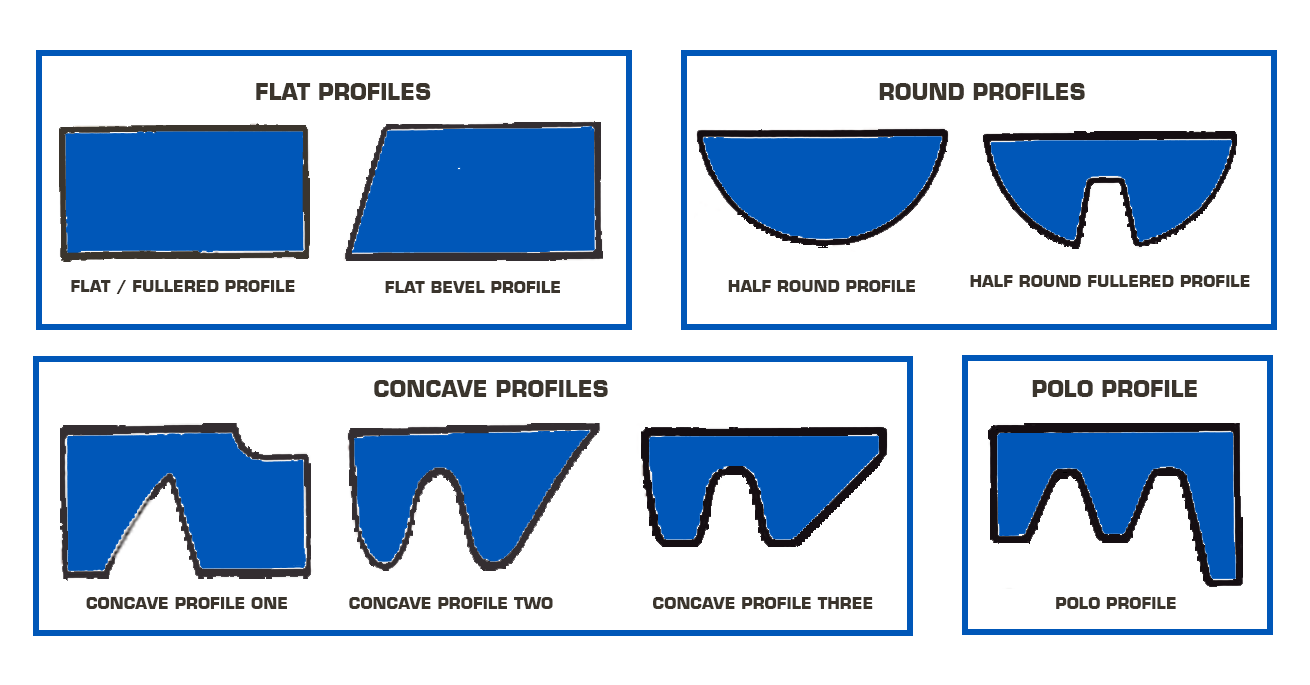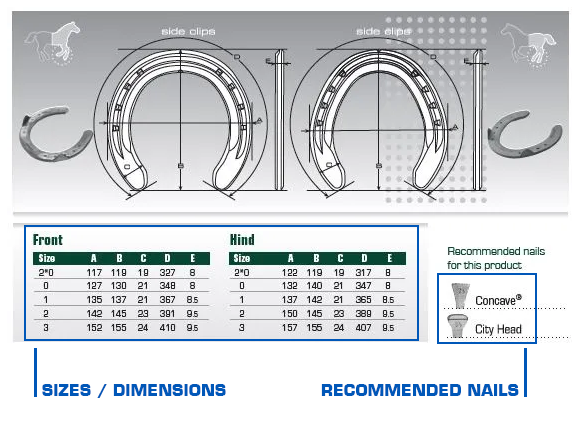Tips For Selecting The Right Horse Shoe
Selecting the right horse shoe can often be confusing for farriers. This is not surprising when we look at the variety of breeds and number of disciplines horses perform in around the world. When you also consider the unique needs of the clients and horses you are servicing, as well as the various sizes and shapes of their feet, things can become even more complex.
In this blog we’ll go through a range of tips for selecting the right horse shoe, so you can ensure all your bases are covered next time you’re shoeing a for a client.
Lifestyle Factors To Consider In Horse Shoe Selection
There are many factors that decide which option is best for shoeing a specific horse, and their impact will vary based on the individual animal. When these factors are combined, they direct us towards the appropriate stock, size, and style of shoe, and as such, should be considered on a case by case basis for each of the horses you service in your practice.
If you have read my blog on shoeing and trimming tips, you may recall that I use a shoeing plan in my practice. This plan involves consideration of a number of factors to help determine the correct shoe type for the horse you are working with.
These considerations include but are not limited to:
- Age
- Breed
- Conformation
- Discipline
- Shoeing interval
- Environment
- Workload
You will also need to consider whether the horse is afflicted by any conditions (such as thrush or seedy toe) as well as any other additional requirements from the client, and factors you deem necessary to maintain a sound platform for the horse.
Selecting The Right Horse Shoe Width
The width is one of the most important considerations in horse shoe selection, as it will also influence the nail placement.
The reason that the nail placement is influenced by stock width is quite simply the wider the shoe stock the further in the nail placement! If a nail hole is closer to the outside of a horse shoe it is referred to by farriers as being a fine nail hole. Alternatively, if it is closer to the inside of the shoe stock, it is referred to as being coarse.
This is crucial in avoiding issues, as situations such as using a larger, wider shoe with a course nail placement on a horse with thin walls will inevitably result in quicking or pricking the horse.
As a general rule of thumb, the appropriate width of stock should be around twice the thickness of the horse’s hoof wall, however on larger breeds such as cobs or draughts, the width of stock should be slightly wider to coincide with their thicker walls.
Selecting The Right Hose Shoe Thickness
The thickness of the stock should also be a consideration when deciding on the right width. This is because these two factors are the main determinants (apart from the material) that influence the weight and nail position of the shoe.
For example, if the shoe is too thick, it will inevitably require a larger, heavier nail to retain the shoe. So, when selecting the right horse shoe thickness, you need to take into account the recommended nail for that shoe. This information is generally provided alongside the sizing chart.
Measuring Horse Shoe Size
You will need to take two hoof measurements to ascertain the correct shoe size – hoof width, and hoof length.
Firstly, measure the width of the horse’s trimmed foot at the widest point. When recording this measurement, be sure to allow for expansion of the perimeter.
Next, you will need to find out the toe to heel length of your horse’s foot. These measurements can then be compared against the specifications for shoes you are considering in order to ensure that you are selecting the right horse shoe.
Shoes and feet are measured many ways by farriers, so be sure to check that the shoe you’ve considered is measured the same way as the hoof. For example, some farriers measure toe to heel as indicated in yellow, while others measure toe to heel straight down as indicated in blue.
These two methods are very similar, but farriers looking for factory made shoes can compare with the supplier’s data on the webpage.
Understanding Manufacturers Sizing
Similar to shoe sizes for people, where there is a variation between US to UK sizing scales, there is also a differentiation in horse shoe sizes. Luckily, most manufacturers will provide measurements of their shoe sizes for size comparison. This enables you to view the available sizes and their respective measurements prior to purchasing, which is incredibly helpful in horse shoe selection.
Example of the technical Data for a St Croix Advantage Steel Horse Shoe available for sizing @ Mustad Australia
Measuring The Hoof When Making Your Own Shoe
Measurements become even more complex when a shoe is being crafted from scratch, as farriers making shoes have their own formulas. These formulas are used to calculate how much extra steel to cut for the bend and accommodate for the way they forge shoes. They are highly personalised to the farrier’s shoe making style, and all of us are different. For example, Col Smith cuts half an inch less than me to make a shoe, as he works them more than I do.
Another method used by some farriers is to use a dress makers tape and measure from one heel all the way around the circumference of the foot to the other heel. They then add what they require for the shoe and craft it in this manner.
A Note On The Role Of Record Keeping In Horse Shoe Selection
It is recommended that hoof measurements, shoe sizing and any additional considerations are recorded for each horse that you see. This makes selecting the right horse shoe for them easier in the future, as it saves you having to repeat the entire process. It also makes it easier to provide optimal care and keep on top of any concerns that may arise. The EQUINET App is ideal for this, as it allows you to keep detailed information accessible for future visits and shoeing.
Additional Considerations For Selecting The Right Horse Shoe
In addition to choosing the correct size and width of shoe, it is also imperative that we choose the correct profile and weight for the discipline the horse is performing.
Weight
If the horse is racing you wouldn’t choose a heavy flat shoe as it would inhibit performance, not to mention being against the rules of racing! Instead, you would choose an aluminium racing plate that is specifically designed with the correct weight and concave profile for race conditions.
On the other hand, selecting the right horse shoe for show jumping would call for a lighter option. By the same token, horses with weak walls will not cope well with heavy shoes and should instead be fitted with a light option such as aluminium.
Having said that, a horse that spends the majority of its time doing road work would not be well suited to an aluminium shoe, with a larger, steel horse shoe better resisting wear in these conditions.
Stock Profiles In Horse Shoe Selection
Similar to weight, the correct selection of shoe stock profile will have a significant impact on not only performance, but also shoe retention. This is because protection and traction are two of the key reasons we shoe horses, and the profile of the shoe heavily influences these.
Due to this, it is imperative we choose the correct profile of shoe for the discipline the horse is competing in, and the surfaces it is being ridden on. This is vital in achieving the best possible outcome for both the horse and client.
For example, the use of a concave section on a horse that is competing on grass or slippery conditions – perhaps in a discipline like endurance – would be a better choice of stock profile than a flat shoe, as the concave is design specifically for these conditions. However, concave would be a poor choice on a reining horse as it would have too much traction.
Heel Offset
It is common for farriers making shoes to offset the toe of the shoe and put more material into the outside for lateral support with a block heel. The steel on the inside is then drawn down and a hunter heel is usually applied.
This type of craftsmanship is generally applied when horses are used in environments where they are likely to accidentally pull a shoe, such as hunting, polo or racing. The downside of this, however, is that if a horse loses a shoe, a whole new set must usually be purchased. In this way, it could be argued that symmetrical hinds are superior for horses prone to losing shoes, however, although budget does play a role in selecting the right horse shoe, it should not be front and centre in your decision making.
Putting It Into Practice – A Horse Shoe Selection Case Study:
To conclude, let’s put all of this information together in a scenario.
Say we are choosing a shoe for a horse with good walls and a foot that measures 132mm wide by 133mm long. The horse works on grass arenas and will sometimes slip when the grass is wet. They are shod on a five-week rotation and live in a moderate climate, so our main consideration here is traction.
We consider the available horse shoe options and select a steel St Croix Advantage. The size chart allows us to determine that the appropriate shoe size for this horse would be a Size 1, as it measures 135mm x 137mm and allows 3mm for expansion in the horse’s hoof.
The concave section of the shoe will provide adequate traction for the conditions, the width of stock is consistent with the width of the horse’s hoof wall, and the nail placement is appropriate. It is also noted that the recommended nail for this particular shoe stock is a concave style.
On completion of the correct shoe selection, we record the shoe size and products used in our EQUINET App with the date we serviced the horse and the outcome for future reference. The app will also record this information in your inventory, which makes reshoeing simple if you’re happy with the outcome. This is because it simplifies the record keeping process and reduces the amount of stock you have to carry around or have sitting on the shelf.
I hope this blog has given you some information on the right horse shoe selection and how to choose the appropriate product for you and the horses you service. The tips outlined above can be re-applied each time a horse’s shoeing needs change, while using the EQUINET App will simplify the record keeping and inventory processes for you somewhat. Remember, selecting the right horse shoe will be an ongoing process, so don’t forget to reassess as needed, and always leave a little extra room for expansion.
All the best Dean Lewis, AWCF






